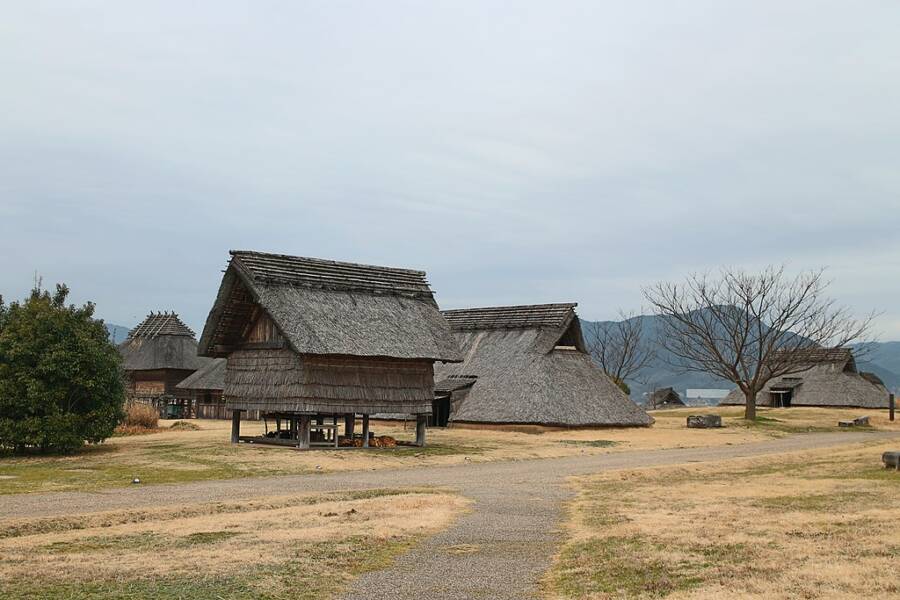Remains dating back 2,300 years suggest that the current genome of Japan started to form when immigrants from the Korean Peninsula mixed with the native Jomon population during the Yayoi period.

UnsplashNew research has helped clear up a longstanding debate involving competing models of how the genome of Japan took shape during antiquity.
Since the 1950s, some scholars have hypothesized a dual ancestry model to explain how the population of Japan first took shape thousands of years ago. This model posits that the native Jomon people interbred with immigrants from the Korean Peninsula known as the Yayoi between 300 B.C.E. and 538 C.E.
However, at least one recent study has rejected this theory and proposed a triple ancestry model after analyzing DNA from modern Japanese groups and ancient Yayoi remains. This theory states that modern Japanese people are the descendants of three groups: Jomon, Yayoi, and an unknown Northeast Asian population.
But now, a new study from the University of Tokyo has discovered evidence that sheds greater light on the origins of the Japanese genome. The study revealed that the Northeast Asian group, previously thought to have arrived in Japan on their own, had instead already mixed with Yayoi populations before their migration to the Japanese archipelago.
While still confirming the presence of three distinct ancestral groups, the researchers strongly believe that the Northeast Asian lineage did not migrate to Japan independently. Now, the team aims to study more Yayoi genomes to better understand how this genetic mixing unfolded.
Competing Models Regarding The Origins Of Japan’s Genome

Wikimedia CommonsA reconstruction of what common dwellings looked like in Japan during the Yayoi period.
In 2021, a collaborative study between Irish and Japanese researchers discovered that Japanese ancestry was comprised of three parts: Jomon hunter-gatherer-fishers from the Paleolithic age (14000 B.C.E. to 300 B.C.E.), Yayoi farmers (300 B.C.E. to 250 C.E.), and an unknown group from Northeast Asia.
This triple ancestry model differed from the previous dual ancestry model of Japanese origins that only recognized Jomon and Yayoi lineages. However, the researchers behind the 2021 study were still unclear about how these three groups mixed and how their interactions impacted agricultural and linguistic traditions.
“The demographic origins and impact of the agricultural transition and later state formation phase are largely unknown. From a historical linguistic standpoint, the arrival of proto-Japonic language is theorized to map to the development of Yayoi culture and the spread of wet rice cultivation…whether the spread of knowledge and technology was accompanied by major genetic exchange remains elusive,” the study explained.
Another study in 2024 confirmed the 2021 study’s findings after analyzing the DNA of 3,200 Japanese people in seven different regions across the country. This study likewise hypothesized that immigration to Japan came from two different sources — Yayoi groups and an unknown Northeast Asian group both interbreeding with Jomon populations.
Then, in October 2024, the new study from the University of Tokyo upended these previous two studies by analyzing ancient DNA.
Scientists Extract DNA From 2,300-Year-Old Bones To Uncover The Mysterious Origins Of Japan’s Genome

Kim et al 2024The 2,300-year-old remains that were used in the new DNA analysis.
The study from the University of Tokyo focused on identifying and sequencing DNA from Yayoi-period people believed to have immigrated to Japan.
The team recovered DNA from a 2,300-year-old middle-aged woman previously discovered in 1952 among the Doigahama ruins in Yamaguchi Prefecture. This site contained the remains of 300 Yayoi-period humans and was later excavated by researcher Kaneseki Tsuyoshi. He ultimately created the dual ancestry hypothesis after noticing key distinctions between the Yayoi remains and the Jomon people.
After sequencing the ancient woman’s DNA, the researchers once again confirmed the presence of three ancestral groups. Then, the team used a model, investigating what a genome would look like if modern Koreans, who have both East Asian and Northeast Asian genome components, migrated to the Japanese archipelago and interbred with the Jomon people.
When they applied the model, the team discovered remarkable similarities with the DNA of modern Japanese people.
“These results strongly suggest that a population with both East Asian and Northeast Asian genomic components migrated from the Korean Peninsula to the Japanese archipelago during the Yayoi period, and that the group that was born from interbreeding with the Jomon people became the ancestors of modern Japanese people,” the study’s authors wrote.
Thus the team concluded that the 2021 study proposing a triple ancestry model was not completely correct. While modern Japanese people did possess Jomon, Yayoi, and Northeast Asian lineage, these groups did not immigrate to Japan separately. Instead, the Northeast Asian lineage had already interbred with Yayoi groups prior to arriving in Japan.
With these findings, the researchers hope to examine more Yayoi genomes to better explain how these groups eventually combined.
“Since our study has identified the primary origins of the immigrants, our next goal is to examine the genomes of more Yayoi individuals to clarify why more than 80% of the genomic components of the modern Japanese population are derived from immigration and how the admixture between continental Asian and indigenous Jomon people progressed within the Japanese Archipelago.”
After reading about this new Japanese DNA study, dive into the story of Ötzi The Iceman, the oldest preserved human being ever found. Then, discover 33 interesting facts about Japan that may surprise you.





